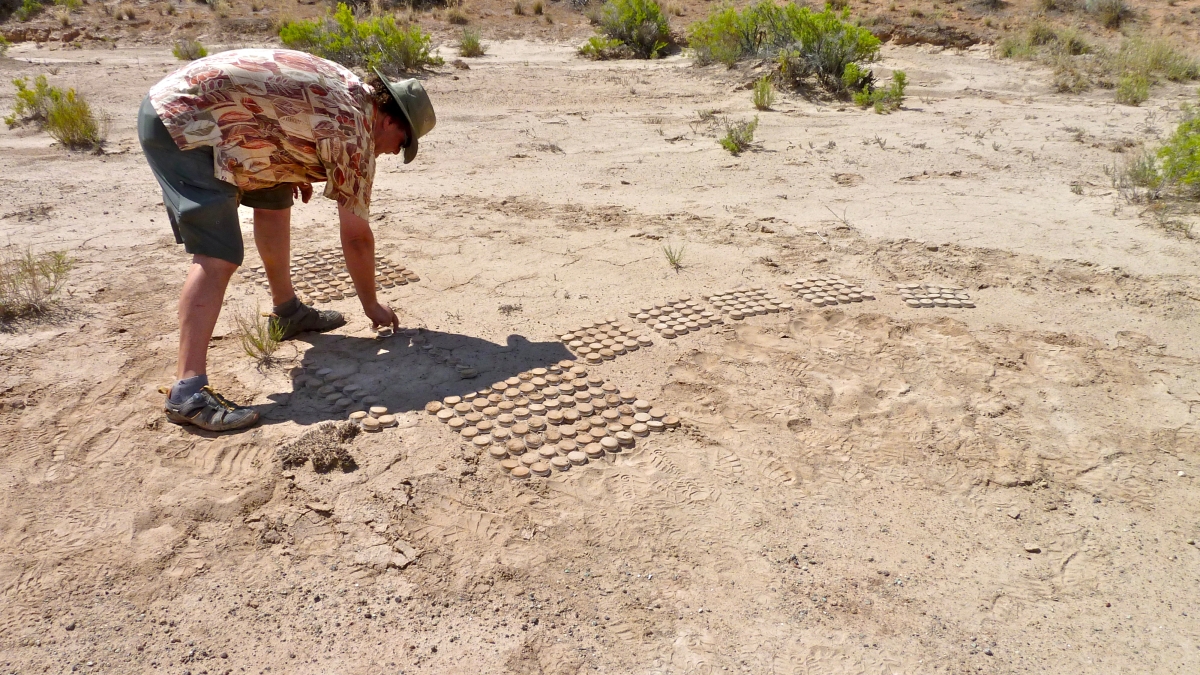Grant helps researcher restore soil surfaces damaged by human activities

The Valley and other parts of Arizona are experiencing an increasing number of massive dust storms – also called haboobs. These dust storms often develop because large areas of the state’s desert soil have lost their natural protective cover due to destructive human activities ranging from agriculture, trampling from cattle, off-road driving or military exercises.
Researchers at Arizona State University have joined a team of scientists working to restore the fragile soils of desert ecosystems and create sustainable co-existence with humans.
As part of a $2.3 million, five-year research project funded by the Strategic Environmental Research and Development Program (SERDP), scientists are developing methods to restore biological soil crusts – or communities of microorganisms that grow on the surface of the soil when there is no plant cover. These soil crusts are typically found in deserts where they are key in protecting the soil from erosion.
“These crusts are quite important to the Southwest,” says Ferran Garcia-Pichel, a professor in ASU’s School of Life Sciences and co-investigator on the project. “Ecologically speaking, they contribute to the fertility of arid lands by fixing carbon, nitrogen and other nutrients into the soil, and they actually hold the soil together. When you have this crust of microorganisms on the top, then the soil is really impervious to water and wind erosion.”
The United States military conducts much of its training exercises, including the movement of tanks and troops, on arid desert lands throughout the Southwest. The U.S. Department of Defense has military installations that cover nearly 30 million acres – 70 percent of which are in fragile desert habitats. When the soil is disturbed, it often creates serious environmental problems.
“The soils are now subject to erosion which is one reason we get these increasingly large dust storms,” said Garcia-Pichel. “This is a consequence of our effect on the environment,” he added. “Research also shows us that the degradation of biocrusts allows some invasive plant species to rapidly take over. We want to find out if we can reverse that by developing biocrusts that can both help inhibit the growth of invasive species and stabilize the soil.”
The SERDP, a military program that partners with the U.S. Department of Energy and the Environmental Protection Agency, recently awarded the grant to ASU’s Garcia-Pichel, Nicole Barger with the University of Colorado, and Jayne Belnap, Sasha Reed, Mike Duniway, and Matt Bowker with the U.S. Geological Survey’s Biological Resources Division. The team will work on two U.S. Department of Defense study sites – Fort Bliss, which is near the southern Texas and New Mexico border and part of the hot climate of the Chihuahuan desert, and the Dugway Proving Ground in Utah’s Great Basin, located in a cooler desert environment.
First, the team will develop ways to grow biocrusts at ASU facilities.
“We’re building a ‘microbial nursery’ in order to bring the microbial seedlings to life. Then, we can start working to repair these critical desert soils,” stated Garcia-Pichel. “We will do large-scale lab cultivations of the microbes that keep the soil together. Then, we will work to devise methods of hardening them so they can survive the harsh conditions once we put them out in the field. That’s probably what is crucial for success.”
The team will work to “scale up” those methods in order to create a production line that can yield enough of the microbes to seed larger desert areas.
The biocrusts developed in the nurseries can then be reintroduced to the desert environments. Following soil recovery, researchers will develop strategies to re-establish native plants. Also, researchers believe the project could have a positive impact on air quality in major metropolitan areas located in desert environments.